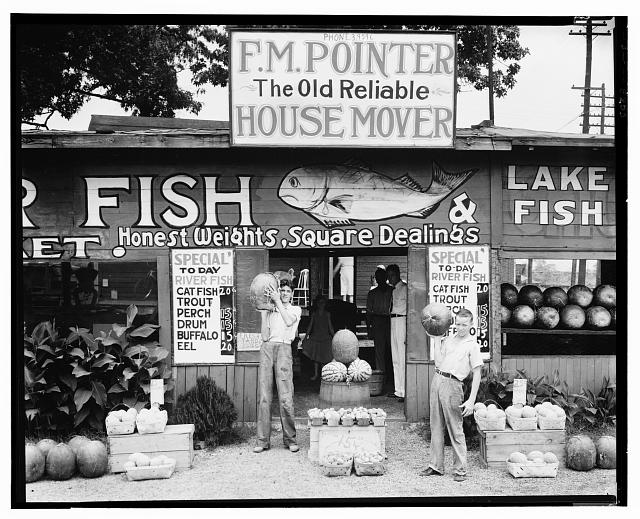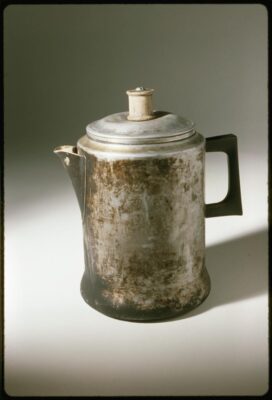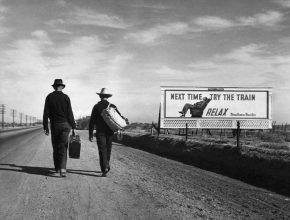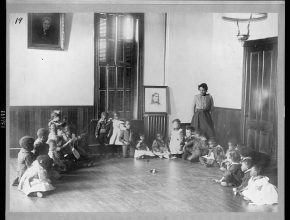“Going to work for a large company is like getting on a train. Are you going sixty miles an hour or is the train going sixty miles an hour and you’re just sitting still?”
-J. Paul Getty
Millie Green, my seventh grade Latin teacher, who claimed to have met a robed Ernest Hemingway in a foreign elevator, always taught us in Latin class to look for Latin derivatives, so with the word “depot,” it became clear what the term really means.
It is French, “dépôt” from the Old French “depost” from the Latin “depositum,” something deposited.
As midnight black soot rains from huge clouds of black smoke, one can almost hear that lonesome engine’s roar as leather shoe heels crunch gravel near the old Myrtle Beach depot on an excursion trip to the Atlantic shore.
There is a root word in the word “railroad,” which reminds one of what a railroad really is – a road – two ribbons of steel, bending, stretching out over God’s infrastructure, rained upon by the sweat of some of the hardest-working Americans and foreign workers since the slaves who built the pyramids of Gaza. Spawning legendary mythology like John Henry, railroads have nursed some of this country’s most prolific songwriters, like Woody Guthrie.
It’s hard to forget one meaning of the word – To rush or push (something) through quickly in order to prevent careful consideration and possible criticism or obstruction; and to convict (an accused person) without a fair trial or on trumped-up charges.
According to the Association of American Railroads, trains have been used more and more through this century with the following car loadings listed below:
| 1940– 36,358,000 1945– 41,918,000 1950–38,903,000 1955– 32,761,707 1960– 27,886,950 1965– 28,344,381 1970– 27,015,020 1975– 22,929,843 1980– 22,223,000 1982– 18,584,760 |
1983– 19,013,250 1984– 20,945,536 1985– 19,501,242 1986– 19,588,666 1987– 20,602,204 1988– 22,599,993 1989– 21,226,015 1990– 21,884,649 1991– 20,868,297 1992– 21,205,530 |
Remember Richard Trevithick? He was English and pioneered steam locomotives in the early 1800s. On June 17,1831 the first person in the United States died in an accident on a railroad when a boiler blew up on America’s very first passenger locomotive, The Best Friend of Charleston. The fireman was killed.
The first train wreck took place near Hightstown, N.J. Nov. 8, 1833 with the Camden & Amboy train derailed from a broken axle, and the first two passenger fatalities were reported with several other injuries. John Quincy Adams, formerly the President, and railroad businessman Cornelius Vanderbilt were also on board.
A group of Myrtle Beach citizens are trying to save a precious local landmark, the Myrtle Beach Railroad Depot, which came so close to being demolished, the historical structure’s future looked bleak.
The City of Myrtle Beach had been in negotiations with its owner, Chris Yahnis Corp., a beer distributor, to save the structure, but local citizens have taken a stand on the depot – they want to save it.
Photographer Jack Thompson of Myrtle Beach and some other residents are trying to get some citizens to pitch in to make sure the depot remains where it is. At one point Coastal Rapid Public Transit Authority had an interest in buying the land for a depot of mass transit. In August the city entered into negotiations with the depot’s owner, and it took a while for the two sides to agree on a price. It looked as though the building would be razed at one point after the owner had picked up a permit to demolish it.
Brenda O. Moore of Myrtle Beach remembers the depot with fond memories since her father was an agent there.
“The depot should be left where it is and preserved for future generations,” said Moore. “With so many historical buildings and locations being displaced or destroyed. This is one of the last remaining links to the past of Myrtle Beach. The railway was instrumental in the beginning of Myrtle Beach as everything from lumber to store supplies arrived here by train. This could be a beautifully restored building, and I would like to see it used, possibly as a museum-visitor’s center.
“There is currently a model train exhibit above Ed’s Hobby Shop which could be placed in the depot, and Jack Thompson has so many photos of Myrtle Beach’s past that he could do a rotating photo exhibit. At the same time, the depot could serve as a visitor-welcome center, while giving tourist and locals alike an insight to our past and beginning. This could be accomplished by the help of many sources, one of which is the Myrtle Beach Downtown Redevelopment Corporation, who wants a new visitor’s center and a new transportation center. I believe the depot could be an integral part of both.”
The downtown group’s advisory board, appointed from 1995-98, suggested to the Myrtle Beach City Council that it earmark an estimated $2 million for redeveloping, which included the purchase of the depot property.
“City’s train depot bit of area history,” read a Sun News editorial page column headline Aug. 27. “There is nothing ‘pretty about the old Myrtle Beach train depot, hidden from the eyes of most residents by a former beer warehouse and dotted with out-of-control shrubbery,” the editorial reported.
One alternative has been to move the building, which has been a landmark during this century.
“My grandfather worked on the railroad for 32 years,” said Buddy Whittington, 38, of Myrtle Beach. His grandfather was E.K. “Gene” Whittington. “He was a brakeman. He lived on 31st Avenue. Everybody knew him as Gene. We went down there and put pennies on the track. My brother got to go and ride the train. When I was a kid, we walked through there and picked up spikes.” The kids would paint the spikes gold, and he still has some of the spikes.
“I’ve got a log book. He worked for ACL, later the Seaboard. It has routes and times. I think it was in the 30s. He had a retirement watch they gave him. I’ve got old railroad lanterns, the oil ones he used. There’s all kinds of stories I could tell you. My father was telling me the story of them coming from Chadbourn, and a train had hit a car. The train was burning. My grandfather had to pull a kid from it.”
Whittington was pleased to hear that the depot was being saved.”I’m glad. It would be neat to see them do a scale of the track. I think it’s great that they’re keeping it. I figured it would be torn down. There used to be an ice house. It was in the hub.”
“I’m obviously ecstatic about it,” said Magistrate Derrick Blanton, a railroad enthusiast. “We’ve got little history as it is. I hope it remains on the tracks. It’s a piece of Myrtle Beach history. We lost the Ocean Forest. I think that was one of the saddest days in Myrtle Beach.”
Blanton said the railroad was responsible for much of the initial growth. “Everything that came to Myrtle Beach, it came here by train,” he said.
Blanton remembers when Whittington’s grandfather used to tell him stories.
Whittington told him about when rock was transported to build the airport. “It was brought in all by train,” Blanton said. “It was a wooden structure first. The tracks used to go all the way to the Pavilion by 9th Avenue.”
Blanton remains entranced by trains and was excited about a hobbyist group’s open house at Ed’s Hobby Shop every Saturday from 10 a.m. to 5 p.m. through Christmas. The second floor contains one of the most extensive railroad sets in the county.
In December 1887 the first train came to Conway from Chadbourn, according to The Independent Republic of Horry. The first train to Myrtle Beach ran in 1900, according to the publication.
A survey was done between Conway and the coast by F.G. Burroughs and F.A. Burroughs, his son, in 1896, and the railroad’s name was the Conway Coast & Western Railroad, which was bought out by Atlantic Coast Line in 1912. According to the Chapin Library Archives and Myrtle Beach Scrapbooks I-II, lots were sold by Burroughs & Collins around railroad tracks in Aynor in 1910, and the Burroughs Railroad Company built the first tracks to the coast, changing its name from Conway and Seacoast Railroad to Conway, Coast and Western Railroad in July 1904. The Conway Seashore Railroad was chartered in State Act 147 Feb. 28, 1899. Ed Baldwin of Georgetown was the engineer on the Black Maria, a logging engine from Tabor City, N.C. with wide tread wheels which ran from Conway to New Town.
James H. Chadbourn bought CC&W a year later, and a construction crew member was killed by gunfire one evening in the autumn of 1905, so construction stopped.
“The railroad used to come down by where the Pavilion parking lot is now, and there were only two hotels – the Seaside Inn and the Lafayette Manor,” Walter Geathers told Sun News Women’s Editor Jennifer Amor in the April 14, 1975 issue. The Seaside Inn, a three-story wood frame structure with a cupola and boardwalk, opened in June 1901 after Burroughs & Collins Co. had developed New Town, which changed its name to Myrtle Beach Nov. 1, 1900. The boardwalk led to the Atlantic in the front and to the railroad depot about a block away.
“Up until 1912, people had to depend on the railroad to reach Myrtle Beach,” one archival article reported. “The tramroad was taken over by the Atlantic Coastline Railroad and developed into a standard railroad track. Soon after 1912, roads were improved so that the area became more accessible to visitors. Quite a few people from Florence became interested in the beach and bought most of the lots north to the present site of the Ocean Plaza Hotel.”
Chadbourn came to visit W.H. Privett, grandfather of Ruby Sasser Jones, who wrote, “My Father, The Captain.”
“His train would be a museum piece today! The engine was an old wood burner that had to stop about every ten miles and get wood and water. Great stacks of wood were placed by the railroad, and a great water tank stood nearby.
“There were two coaches and a baggage car besides the freight cars. There were no window screens, so it was wise to wear dark clothes. The smoke and soot poured in through the windows. The coal-burning engines increased this necessity. I remember the first coal burner that came to Conway. Crowds of people came to the station to see it. Mr. Henry Baldwin was the engineer on my father’s train. He was loved by every member of our family.
“Sometimes the railroad company would run excursions to Myrtle Beach – usually on Sunday or the Fourth of July. Then they would fix up coaches and some box cars with passengers standing up. It was a great disappointment to me that my father would never let me take that trip in one of those box cars. Neither would he ever give in to my great desire to ride to the beach with Mr. Baldwin in the engine!
“The Captain knew every person that rode his train. He made sure of that before they got off. He loved people! He had a great personality, a marvelous sense of humor and never failed to play a trick on somebody, if it were at all possible.
“His train was put to so many uses! For instance, it was a ‘potato train’ during the potato season. Late in the afternoon, he, Mr. Baldwin, and the crew went to Burcol about four miles from Myrtle Beach and picked up the day’s harvest of potatoes grown by Myrtle Beach Farms Company. Next morning at 5 a.m. these were transferred to a train going to Chadbourn and on their way to northern markets. Sometimes it was a special train to haul logs!”
A 1965 Strand Historical Progress Edition in the archives reports on the Atlantic Coast Line Railroad Company and its winter service for Myrtle Beach “that are being received in anticipation of the opening of the new Ocean Forest Hotel and for the convenience of the large number of golfers and visitors expected at the new country club.”
According to this issue of The Myrtle Leaf in January 1930, a weekend Pullman from New York was in operation, leaving New York every Saturday morning at 2:10 and arriving in Myrtle Beach about 7:30 Sunday morning. The Atlantic Coast Line Railroad took over the tramroad and turned it into a standard train track with George C. Cox as the first railroad agent.
“In his office was an Oliver typewriter, the first typewriter in Myrtle Beach,” according to one article from The Myrtle Beach Sun dated Sept. 12, 1952.
Will the Myrtle Beach depot turn into a museum, like the Mullins Tobacco Museum?
As you rocked back and forth on your first train ride as a child, the sleepy effect forced your eyelids shut as your ears concentrated on the two distinct thumps as the heavy shiny wheels clacked at the end of each rail.
And, if you’re lucky, when you reach the end of the line, hopefully there will be a Myrtle Beach depot where shadows of past passengers await to greet you at your destination.







